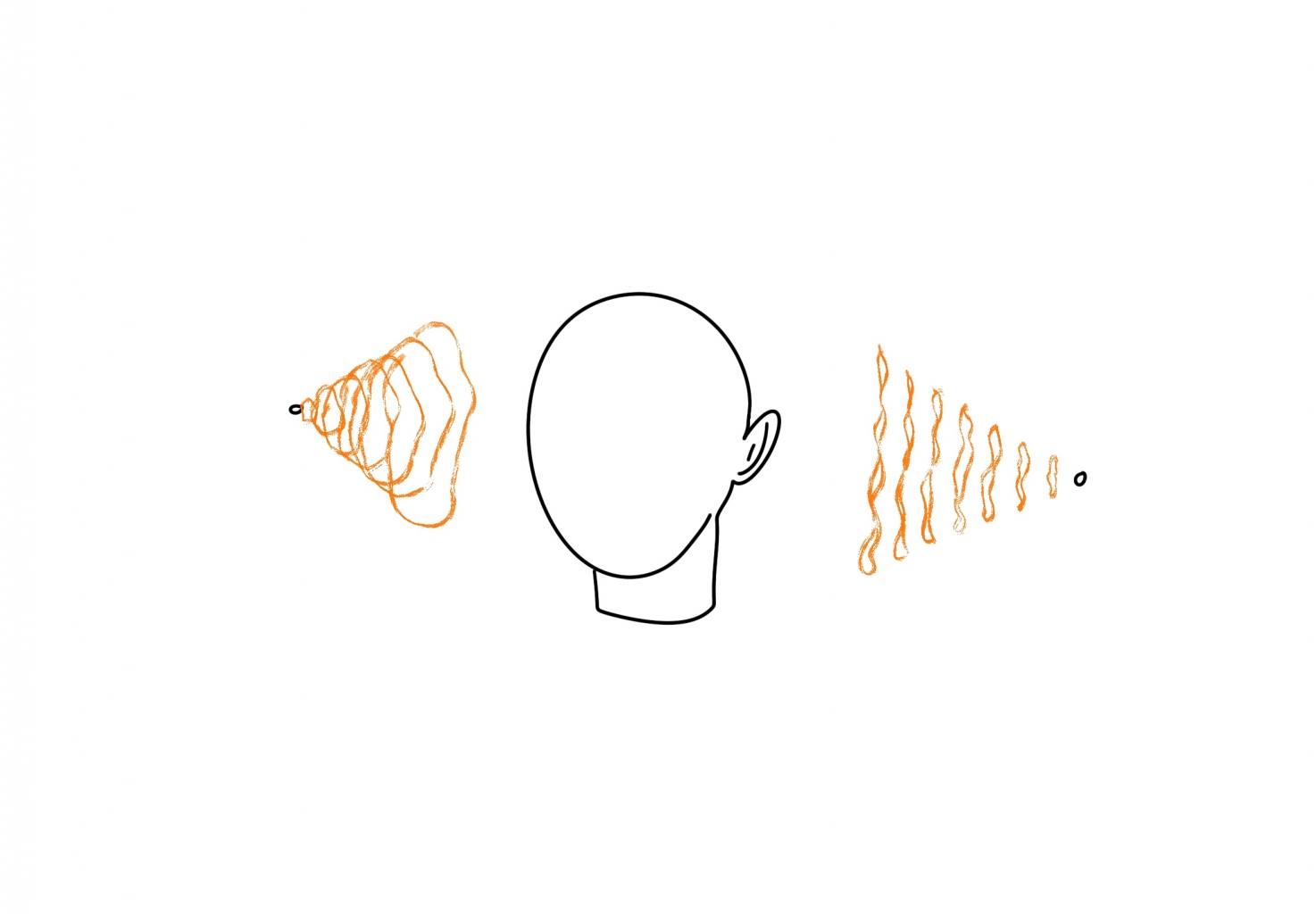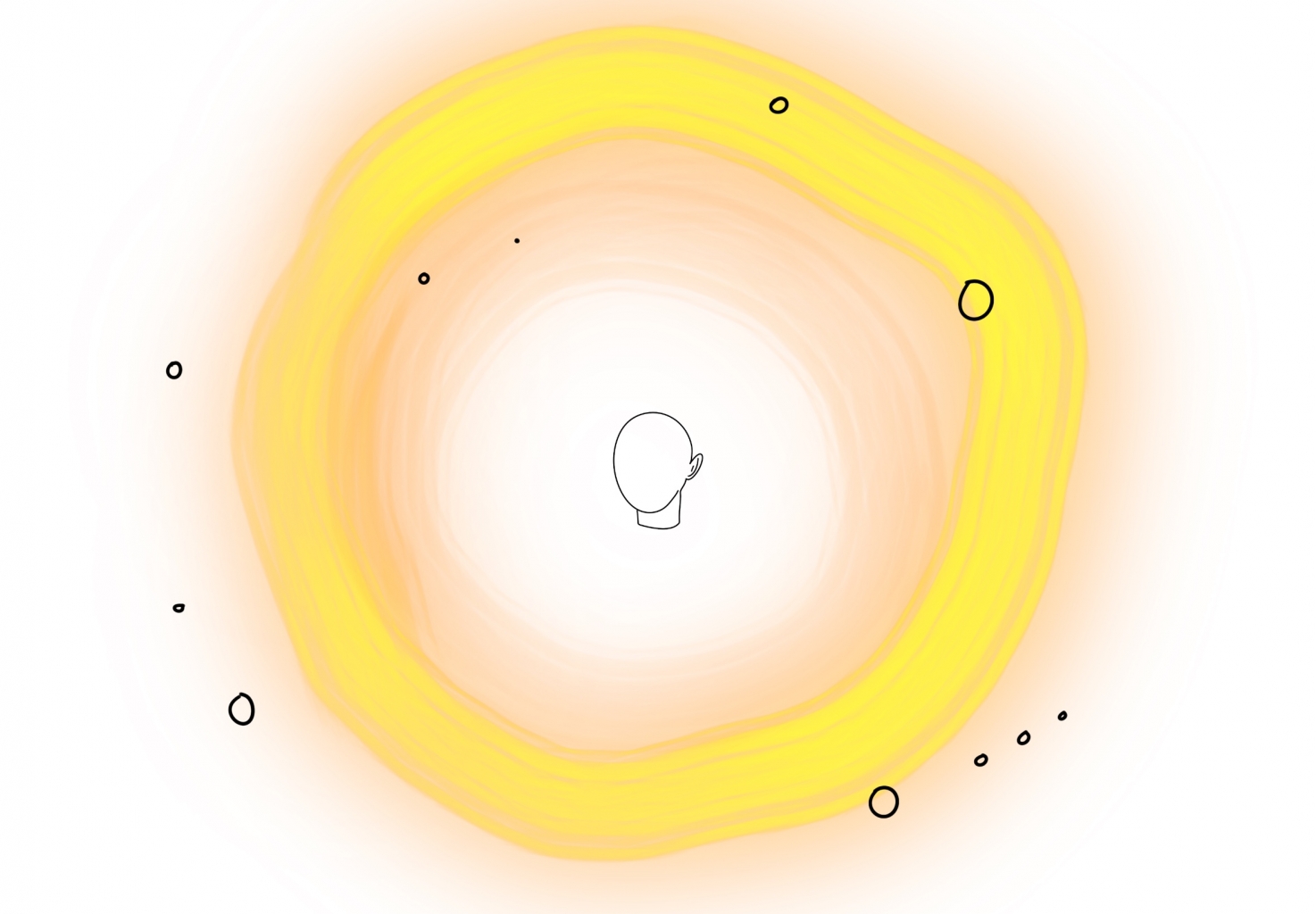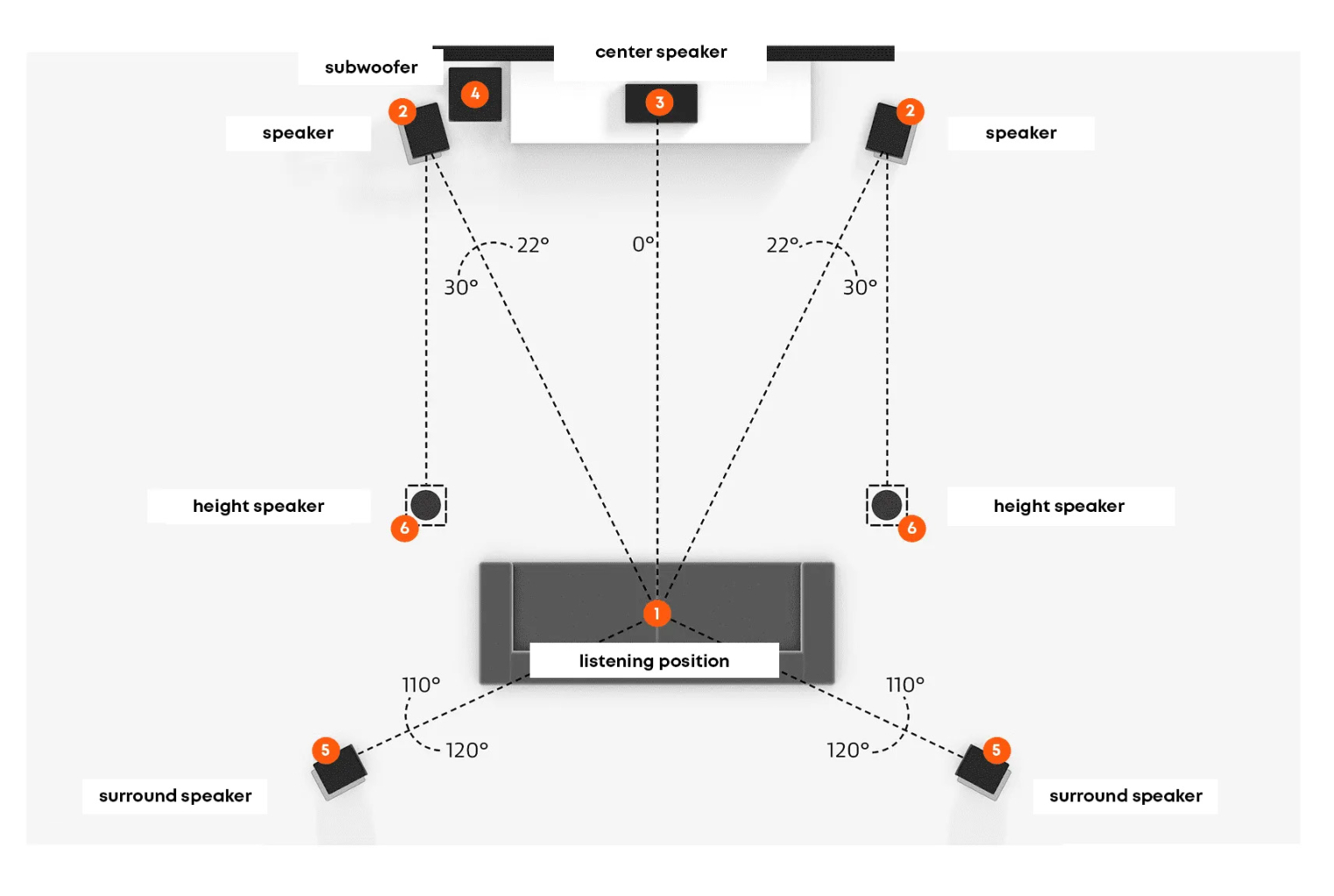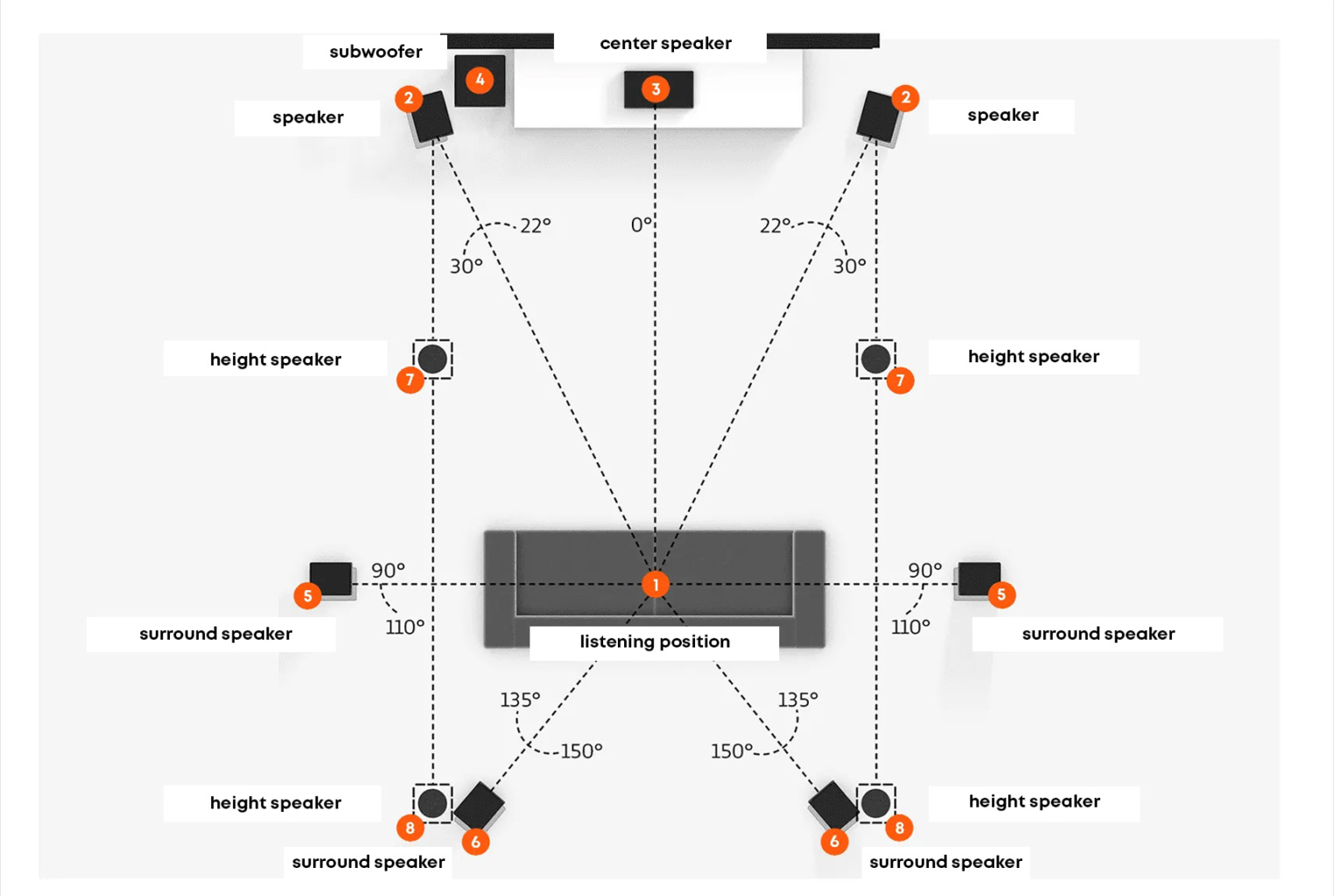WHAT IS DOLBY ATMOS?
Part 1 of the series: Dolby Atmos
Dolby Atmos is on everyone’s lips, and for good reason. However, the topic of Dolby Atmos is somewhat more complex. Many users are hesitant to delve deeper into immersive audio and specifically Dolby Atmos and its peculiarities. Therefore, we would like to give you a deeper understanding of the topic in our blog. We prepare the individual aspects in an understandable form to give you an insight into the present and future of immersive audio. And maybe you will soon become Dolby Atmos producers yourselves. Immersive audio is the future, and so is Dolby Atmos.
If you want to be part of this future, it’s time to get closer to the topic.

Dolby Atmos is always recognizable by the corresponding logo.
INHALTSVERZEICHNIS
Who is Dolby Atmos for?
…and for which music genre is Dolby Atmos suitable? The answer is as short as it is simple: for all. However, depending on the musical genre, there are different methods of producing in Dolby Atmos. Additionally, the possibilities can be exploited differently. While classical or live music focuses primarily on reproducing the real acoustics or placing the listener in a virtual concert hall, hip-hop or electronic music from dark ambient to EDM takes completely different paths. Here, more 3D effects can and should be used.

Schematic representation:
Stereo
Source: Dolby Atmos

Schematic representation:
Sourround Sound
Source: Dolby Atmos
From mono to surround sound
Before we answer the question “What is Dolby Atmos?”, we first need to clarify what immersive audio or 3D audio is. The playback of audio has not only changed over time on the listener’s side but has also significantly improved. First, there was mono, then stereo, and at the beginning of the 21st century, the surround sound playback format emerged. In the latter, the sound does not come exclusively from the front but from speakers placed around the listener in the room. This makes the listening experience, for example, of a concert or the sound of a movie, much more realistic, as the listener virtually sits in the middle of the action.
Typically, a surround sound setup uses five or six speakers positioned around the listener in the room. There is a specific arrangement called 5.0 or 5.1: two speakers left and right in front, one speaker in the center – this is called the center speaker. Additional speakers are placed at the back or sides. In a 5.1 speaker configuration, there is also a subwoofer for reproducing low frequencies that cannot be localized by the human ear. Therefore, only one subwoofer is needed. In principle, more speakers can be added to the sides or back in a surround sound setup, for example, in the 7.1 and 9.1 formats. The higher number of speakers makes the sound even more realistic for the listener. In 5.0 or 5.1, gaps can occur in the playback of sounds from a specific direction, which can be avoided with a larger number of speakers.


Schematic representation: Dolby Atmos
Source: Dolby Atmos
3D-Audio – the next step
But that’s not all. Surround is, in a way, 2D sound, as the format cannot reproduce sound coming from above. Even in a concert hall with a classical orchestra, the sound does not only come from the stage. The audience or applause is also perceived by the listener behind and next to them. Additionally, there are reflections of the sound from the side walls and from behind, and of course, from the ceiling. For these reasons, an additional third dimension is needed for sound: for 3D audio formats, additional height or ceiling speakers have been added. Typically, there are two or four speakers. However, there are also formats with six height speakers. Typical 3D audio sound formats for home applications are 5.1.2, 5.1.4, 7.1.4, and even 9.1.4 and 9.1.6 for particularly demanding 3D audio monitoring in recording studios. So far, the term 3D audio has been used for speaker playback formats due to the added third dimension. However, the term immersive audio is also frequently used. In principle, it is the same thing. The only difference is the perspective. 3D refers to the three spatial dimensions, meaning it is a physical description of things. In contrast, immersive focuses on the listener being in the middle of the action, with the main focus on how they perceive the acoustics. Literally translated, the English term immersive means “immersive.”
Dolby Atmos – Speaker Arrangements
5.1.2 Setup
5.1.4 Setup
7.1.4 Setup
There are various ways to set up a Dolby Atmos speaker setup. The smallest meaningful setup is 5.1.2. However, such a setup is hardly found in the studio area of music productions. Here, 5.1.4 is certainly the most widespread. 7.1.4 is also frequently encountered here. 9.1.4, on the other hand, is almost exclusively found in classical music recording studios.
Looking at the illustrations of the three setups, the speakers are numbered as follows: 2 are the speakers left/right, 3 is the center speaker in the middle front, and 4 is the subwoofer. The other numbers indicate the surround speakers; the speakers with the highest numbers are always the height speakers. The position with the number 1 indicates the optimal place for the listener.
Do I need new speakers for my studio now?
If you want to, and only want to listen through speakers, the answer is yes. However, a particularly interesting aspect is that spatial listening is also possible with headphones in Dolby Atmos, with some limitations, even in the music production studio. This means that to start with Dolby Atmos, you don’t necessarily have to use seven or more speakers instead of the previous two, but you can first create the Dolby production through headphones. Mobile work on projects is also guaranteed.
We will go into more detail on this “binauralization” later, as it is a very important and interesting point, not only on the producer side but especially on the consumer or music listener side. A large part of music consumers today listens to music through headphones, and you can also enjoy immersive audio through Dolby Atmos.
In summary, it can be said that various speaker formats and headphone playback are supported by Dolby Atmos. Dolby Atmos is therefore universally applicable and thus widely used. There is something suitable for everyone or every device: from the large home theater setup to listening on the smartphone in the subway – immersive audio everywhere.
Deep Dive – The secret behind Dolby Atmos
That all sounds great. But the question is: “How does Dolby actually do it?” The secret behind Dolby Atmos is called objects. In studio technology, we always think in channels and the traditional left/right panning on a stereo output bus. In Dolby Atmos Home, there are also buses. They are called “Bed” and are immersive – i.e., multichannel. There is at least one basic bed in the 7.1.2 format. The individual channels can be routed to it, and in each channel, there is a panner – not on stereo, but on 7.1.2. Additional beds can also be created, but only up to the size or format of 7.1.2. This means that only a maximum of two height speakers can be represented via the beds, and therefore a virtual sound source can only be placed to a limited extent in height. There is, so to speak, a maximum of top right/left but not top back or front. If it is necessary to define a sound source more precisely, especially in terms of height perception, a different approach must be taken in Dolby Atmos Home.
Instead of routing a channel to the basic bed or another bed, you can make an object out of a channel. An object is, in a way, a channel with the signal, plus information about where the virtual sound source is placed in the room. You could also speak of 3D coordinates in virtual space. This has the advantage that the sound direction from the listener’s perspective can be described more precisely. Additionally, these objects can also move, meaning they are dynamic. The object coordinates are simply recorded or automated. In this context, we also speak of so-called metadata. Using objects also solves the problem of the height channel limitation of the 7.1.2 bed.
In music productions, where it is primarily about spatial representation, a 7.1.2 basic bed is often chosen in combination with four objects representing the four height speakers. Under certain conditions, further objects can be dispensed with. This approach is particularly chosen for classical productions. However, in modern music productions, one naturally wants to exploit the full 3D potential of Dolby Atmos and immersive audio. Therefore, the use of objects is the preferred approach.
In total, 128 “channels” can be used in Dolby Atmos. The 7.1.2 basic bed alone accounts for ten channels. This leaves 118 channels for additional beds or objects.
Wie bewertest du diesen Artikel?
Rating: 0 / 5. Anzahl Bewertungen: 0





